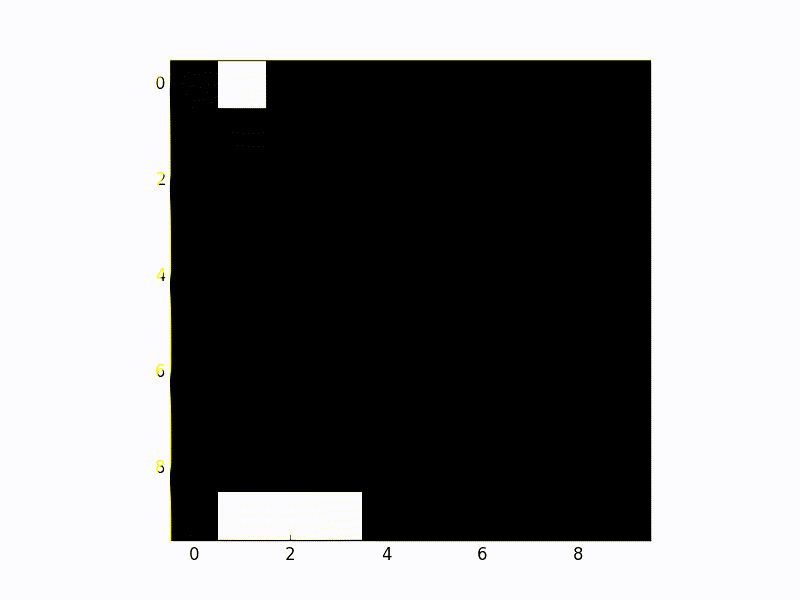Get started with reinforcement learning in less than 200 lines of code with Keras (Theano or Tensorflow, it’s your choice).

So you are a (Supervised) Machine Learning practitioner that was also sold the hype of making your labels weaker and to the possibility of getting neural networks to play your favorite games. You want to do Reinforcement Learning (RL), but you find it hard to read all those full featured libraries just to get a feeling of what is actually going on.
Here we’ve got your back: we took the game engine complexities out of the way and show a minimal Reinforcement Learning example with less than 200 lines of code. And yes, the example does use Keras, your favorite deep learning library!
Before I give you a link to the code make sure you read Nervana’s blog post Demystifying Deep Reinforcement Learning. There you will learn about Q-learning, which is one of the many ways of doing RL. Also, at this point you already know that neural nets love mini-batches and there you will see what Experience Replay is and how to use it to get you them batches - even in problems where an agent only sees one sample of the environment state at a time.
So here is the link to our code. In that code Keras plays the catch game, where it should catch a single pixel “fruit” using a three pixel “basket”. The fruit falls one pixel per step and the Keras network gets a reward of +1 if it catches the fruit and -1 otherwise. The networks see the entire 10x10 pixels grid as input and outputs three values, each value corresponds to an action (move left, stay, move right). Since these values represent the expected accumulated future reward, we just go greedy and pick the action corresponding to the largest value.
One thing to note though, is that this network is not quite like you in exotic restaurants, it doesn’t take the very same action exploiting what it already knows at every time, once in a while we force system to take a random action. This would be the equivalent of you learning that life is more than just Penang Curry with fried Tempeh by trial and error.
In the link you will also find scripts that plays the game with no random actions and generates the pictures for the animation above.
Enjoy!
FAQ
1) How does this Q-learning thing even work?
C’mon read the blog post I just mentioned above… Anyway, think like this: the fruit is almost hitting the ground and your model is just one pixel away from a “catching” position. The model will face similar cases many many times. If it decides to stay or move left, it will be punished (imagine it smelling a bunch of rotten fruits in the ground because it was lazy). Thus, it learns to assign a small Q-value (sounds much better than just “output of neural net”, han?) to those two actions whenever it sees that picture as input. But, since catching the fruit also gives a juicy +1 reward, the model will learn to assign a larger Q-value to the “move right” action in that case. This is what minimizing the reward - Q-value error does.
One step before that, there will be no reward in the next step.
I liked how the previous phrase sounded, so I decided to give it its own paragraph. But, although in that case there is no juicy reward right after, the model can be trained using the maximum Q-value of the future state in the next step. Think about it. If you’re in the kitchen you know that you can just open the fridge to get food. But now you’re in your bedroom writing bad jokes and feel hungry. But you have this vague memory that going to the kitchen could help with that. You just go to the kitchen and there you figure how to help yourself. You have to learn all that by living the game. I know, being Markovian is hard! But then the rest is just propagating these reward expectations further and further into the past, assigning high values for good choices and low values for bad choices (don’t forget that sometimes you hit those random choices in college so you learn the parts of life they don’t talk about in school). For everything else, if you believe in Stochastic Gradient Descent then it is easy to see this actually making sense… I hope…
2) How different is that from AlphaGo?
Not much… But instead of learning Q-values, AlphaGo thought it was smarter to use REINFORCE and learn to output actions probabilities directly. After that, she played several games against herself, so many that it could later learn the probability of winning from each position. Using all that information, during play time she uses a search technique to look for possible actions that would take her to positions with higher probability of winning. But she told me to mention here that she doesn’t search as many possibilities in the future as her older cousin DeepBlue did. She also said that she can play pretty well using just one GPU, the other 99 were running high resolution Netflix series so she can catch up with human culture.
That being said, you should be able to modify this script in 2 or 3 days to get a reimplementation or AlphaGo and Skynet should be 4 weeks away?
JK
3) Your code sucks why don’t you write something better?
4) Did you learn that by yourself?
The bad parts, yes. The good things were taught to me by my friends Evan Kriminger and Matthew Emigh.